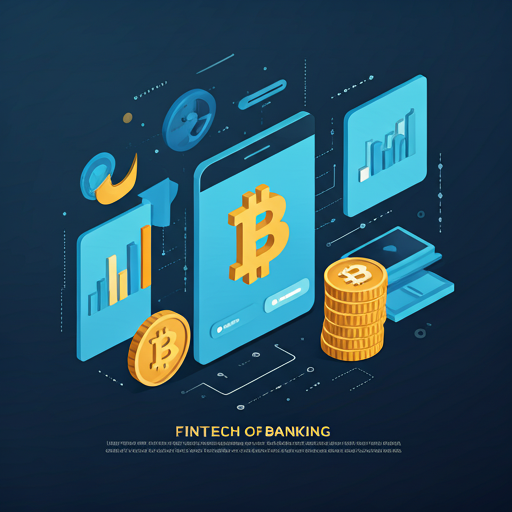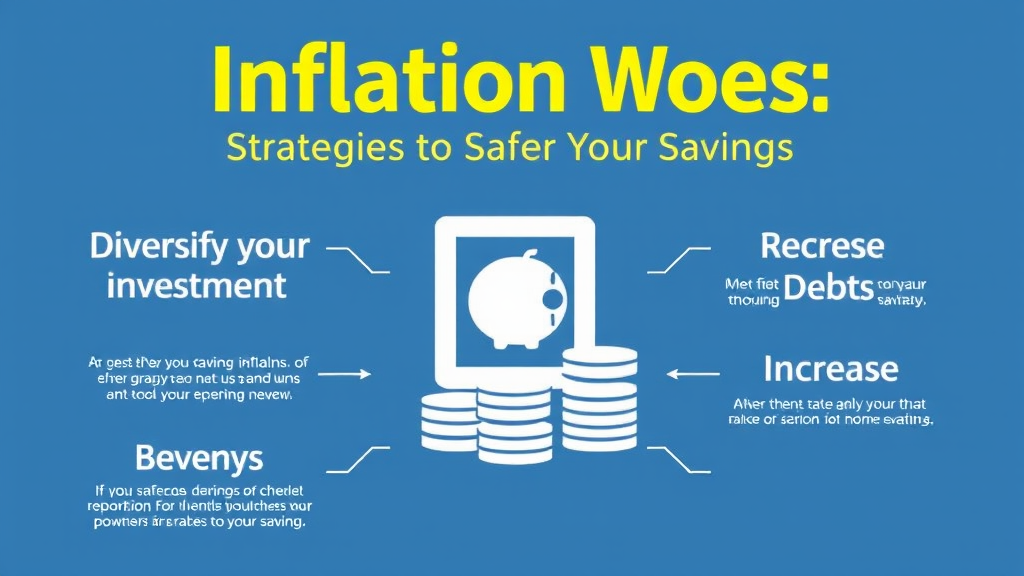Introduction to Fintech Innovations
Definition of Fintech
Fintech, or financial technology, encompasses a broad range of innovations that enhance and automate financial services. It integrates technology into offerings by financial institutions to improve their use of financial services. This sector includes various applications, such as mobile banking, peer-to-peer lending, and blockchain technology. These innovations streamline processes and reduce costs.
For instance, mobile payment solutions allow users to conduct transactions seamlessly. This convenience is crucial in today’s fast-paced environment. Additionally, fintech promotes financial inclusion by providing services to underserved populations. He believes that access to financial services is a fundamental right.
Moreover, fintech companies often leverage data analytics to offer personalized financial products. This data-driven approach enhances client experience and engagement. It is fascinating how technology reshapes traditional banking. Overall, fintech represents a significant shift in how financial services are delivered and consumed.
Historical Context of Fintech
The evolution of fintech can be traced back to the late 20th century, when technological advancements began to reshape financial services. Initially, the introduction of ATMs revolutionized cash access. This was a significant step forward. Subsequently, the rise of the internet in the 1990s enabled online banking, allowing customers to manage their finances remotely. He recognizes this as a pivotal moment in banking history.
In the early 2000s, the emergence of mobile technology further transformed the landscape. Mobile banking applications provided unprecedented convenience. This shift was remarkable. As a result, fintech startups began to proliferate, offering innovative solutions like peer-to-peer lending and robo-advisors. He observes that these developments democratized access to financial services.
Today, fintech continues to evolve rapidly, driven by advancements in artificial intelligence and blockchain technology. These innovations enhance security and efficiency. It is intriguing to witness this transformation. Overall, the historical context of fintech illustrates a continuous journey toward modernization in financial services.
Importance of Fintech in Modern Banking
Fintech plays a crucial role in modern banking by enhancing efficiency and accessibility. It streamlines operations through automation, reducing the need for manual processes. This leads to significant cost savings. Additionally, fintech solutions provide customers with real-time access to their financial data. This transparency fosters trust and engagement.
Moreover, fintech innovations enable personalized financial services tailored to individual needs. For example, algorithms analyze spending patterns to offer customized advice. This approach is highly effective. Furthermore, fintech enhances financial inclusion by providing services to underserved populations. He believes that everyone deserves access to banking.
The integration of advanced technologies, such as blockchain and artificial intelligence, further strengthens security and fraud dftection. These technologies mitigate risks associated with traditional banking. It is essential to prioritize security in finance. Overall, fintech is reshaping the banking landscape, making it more responsive to consumer demands.
Overview of Cryptocurrency’s Role in Fintech
Cryptocurrency significantly influences fintech past introducing decentralized financial systems. These systems operate independently of traditional banks, offering users greater control over their assets. This independence is empowering. Additionally, cryptocurrencies facilitate faster and cheaper cross-border transactions. This efficiency is crucial in a globalized economy.
Moreover, blockchain technology underpins cryptocurrencies, ensuring transparency and security. This technology reduces the risk of fraud. He believes that security is paramount in finance. Furthermore, cryptocurrencies enable innovative financial products, such as decentralized finance (DeFi) applications. These applications provide services like lending and trading without intermediaries. It is fascinating how this disrupts traditional finance. Overall, cryptocurrencies are reshaping the fintech landscape, driving innovation and accessibility.
Blockchain Technology and Its Impact
Understanding Blockchain Basics
Blockchain technology is a decentralized ledger system that records transactions across multiple computers. This structure ensures that the data is immutable and transparent. He emphasizes the importance of transparency in finance. Each block in the chain contains a list of transactions, which are verified by network participants. This verification process enhances security and trust.
Moreover, blockchain eliminates the need for intermediaries, reducing transaction costs and time. This efficiency is particularly beneficial in cross-border payments. He believes that efficiency drives innovation. Additionally, smart contracts, which are self-executing agreements, automate processes and reduce human error. This automation is revolutionary. Overall, blockchain technology is transforming various sectors, including finance, supply chain, and healthcare.
Decentralization and Security Benefits
Decentralization is a core principle of blockchain technology, enhancing security and resilience. By distributing dzta across a network of nodes, it reduces the risk of a single point of failure. This structure is crucial for maintaining integrity . Each transaction is cryptographically secured, making unauthorized alterations nearly impossible. He notes that security is vital in financial transactions.
Furthermore, the consensus mechanisms employed in blockchain, such as proof of work or proof of stake, ensure that all participants agree on the validity of transactions. This agreement fosters trust among users. It is essential to build trust in finance. Additionally, the transparency of blockchain allows for real-time auditing, which further enhances accountability. This level of oversight is unprecedented. Overall, decentralization and security benefits make blockchain a transformative force in various industries.
Smart Contracts and Their Applications
Here are 10 trending article titles for a financial website based on the latest news and analysis of financial trends: No input data
Case Studies of Blockchain in Banking
Several banks have successfully implemented blockchain technology to enhance their operations. For instance, JPMorgan Chase developed the Quorum platform to facilitate secure transactions. This platform improves transaction speed and reduces costs. He believes that efficiency is crucial in banking.
Another example is Santander, which uses blockchain for cross-border payments. This application significantly decreases the time required for international transfers. It is impressive how quickly funds can move. Additionally, the Bank of England has explored blockchain for central bank digital currencies (CBDCs). This initiative aims to modernize the financial system. He notes that modernization is essential for competitiveness. Overall, these case studies illustrate the transformative potential of blockchain in banking.
Digital Payments and Cryptocurrencies
Evolution of Digital Payment Systems
The evolution of digital payment systems has transformed how transactions are conducted. Initially, electronic funds transfers (EFT) allowed for basic online transactions. This was a significant advancement. Over time, credit and debit cards became prevalent, enabling faster payments. He notes that speed is essential in commerce.
With the rise of mobile technology, digital wallets emerged, allowing users to store payment information securely. This convenience is noteworthy. Recently, cryptocurrencies have introduced a new paradigm in digital payments. They offer decentralized and borderless transactions. He believes this innovation is revolutionary. Additionally, blockchain technology enhances security and transparency in cryptocurrency transactions. This is crucial for building trust. Overall, the landscape of digital payments continues to evolve rapidly.
Cryptocurrency as a Payment Method
Cryptocurrency is increasingly recognized as a viable payment method in various sectors. Its decentralized nature allows for peer-to-peer transactions without intermediaries. This reduces transaction fees significantly. He believes that lower costs benefit consumers. Additionally, cryptocurrencies enable instant cross-border payments, eliminating delays associated with traditional banking. This speed is advantageous for businesses.
Moreover, the use of blockchain technology enhances security and transparency in transactions. Each transaction is recorded on a public ledger, making it traceable. This traceability is important for accountability. Some merchants are now accepting cryptocurrencies, expanding their customer base. It is exciting to see this growth. Overall, cryptocurrency offers unique advantages as a payment method in the digital economy.
Challenges and Opportunities in Digital Payments
Digital payments present both challenges and opportunities in the evolving financial landscape. One significant challenge is regulatory uncertainty surrounding cryptocurrencies. This uncertainty can hinder widespread adoption. He believes regulations are necessary for stability. Additionally, security concerns, such as hacking and fraud, pose risks to users. These risks must be addressed effectively.
On the other hand, the growing acceptance of digital payments offers substantial opportunities for innovation. For instance, businesses can leverage blockchain technology to enhance transaction efficiency. This efficiency can lead to cost savings. Furthermore, the rise of mobile payment solutions provides access to underserved markets. It is crucial to reach these consumers. Overall, addressing challenges while capitalizing on opportunities will shape the future of digital payments.
Future Trends in Payment Technologies
Future trends in payment technologies are likely to be shaped by advancements in blockchain and artificial intelligence. These technologies will enhance transaction speed and security. Additionally, the integration of biometric authentication methods, such as fingerprint and facial recognition, will improve user experience. This convenience is essential for adoption.
Moreover, the rise of central bank digital currencies (CBDCs) is expected to transform the payment landscape. CBDCs can provide a stable digital alternative to cryptocurrencies. It is interesting to see this development. Furthermore, the increasing use of mobile wallets will facilitate seamless transactions. This trend is gaining momentum globally. Overall, these trends indicate a shift towards more efficient and secure payment systems.
Regulatory Landscape and Compliance
Current Regulations Affecting Fintech
Current regulations affecting fintech are diverse and complex, reflecting the rapid evolution of the industry. Regulatory bodies are increasingly focused on consumer protection and data privacy. He believes that consumer trust is essential. Additionally, anti-money laundering (AML) and know your customer (KYC) regulations are critical for fintech companies. These regulations help prevent fraud and illicit activities.
Moreover, different jurisdictions have varying approaches to cryptocurrency regulation. This inconsistency can create challenges for global operations. It is important to understand local laws. Furthermore, the emergence of open banking regulations is reshaping how financial data is shared. This trend promotes competition and innovation. He notes that innovation drives progress. Overall, navigating the regulatory landscape is crucial for fintech success.
Impact of Regulations on Cryptocurrency Adoption
The impact of regulations on cryptocurrency adoption is significant and multifaceted. Stricter regulations can enhance consumer confidence by ensuring safety and transparency. He believes that trust is vital for growth. However, excessive regulation may stifle innovation and limit market participation. This can hinder the development of new technologies.
Moreover, clear regulatory frameworks can facilitate institutional investment in cryptocurrencies. This investment is crucial for market stability. He notes that stability attracts more users. Additionally, regulations addressing tax implications can encourage compliance and broader adoption. It is essential to understand tax responsibilities. Overall, the regulatory landscape plays a critical role in shaping the future of cryptocurrency adoption.
Global Perspectives on Fintech Regulation
Global perspectives on fintech regulation vary significantly across regions. In the United States, regulatory bodies focus on consumer protection and financial stability. He believes that stability is essential for growth. Conversely, countries like Singapore adopt a to a greater extent innovation-friendly approach, encouraging fintech development. This fosters a vibrant ecosystem.
In Europe, the European Union is implementing comprehensive regulations to standardize fintech practices. This standardization aims to enhance cross-border operations. He notes that consistency is crucial for businesses. Additionally, emerging markets often face unique challenges, such as limited infrastructure and regulatory uncertainty. These challenges can hinder growth. Overall, understanding these global perspectives is vital for navigating the fintech landscape.
Future of Compliance in a Digital World
The future of compliance in a digital world will increasingly rely on technology to enhance efficiency and accuracy. Advanced analytics and artificial intelligence can streamline compliance processes, reducing manual errors. He believes that automation is essential for scalability. Additionally, regulatory technology (RegTech) solutions will emerge to help businesses navigate complex regulations. This support is crucial for compliance.
Moreover, as digital transactions grow, so will the need for robust data protection measures. Companies must prioritize cybersecurity to safeguard zensitive information. It is vital to protect customer data. Furthermore, collaboration between regulators and fintech firms will be necessary to create adaptive compliance frameworks. This collaboration fosters innovation while ensuring accountability. He notes that accountability is key in finance. Overall, the compliance landscape will evolve to meet the demands of a digital economy.
The Future of Banking with Fintech Innovations
Emerging Technologies Shaping Banking
Emerging technologies are significantly defining the future of banking. Artificial intelligence (AI) is being utilized to enhance customer service through chatbots and personalized financial advice. He believes that personalization improves customer satisfaction. Additionally, blockchain technology is revolutionizing transaction security and transparency. This innovation reduces fraud risks.
Moreover, the adoption of mobile banking applications is increasing, allowing users to manage their finances conveniently. This convenience is essential in today’s fast-paced world. Furthermore, data analytics enables banks to assess credit risk more accurately, leading to better lending decisions. It is crucial to make informed choices. Overall, these technologies are transforming banking into a more efficient and customer-centric industry.
Customer Experience and Personalization
Customer experience and personalization are becoming central to the future of banking. Financial institutions are leveraging data analytics to understand customer preferences and behaviors. This understanding allows for tailored product offerings. He believes that tailored services enhance customer loyalty.
Moreover, the use of artificial intelligence enables banks to provide personalized recommendations in real-time. This immediacy improves decision-making for customers. Additionally, mobile applications are increasingly incorporating features that allow users to customize their banking experience. This customization is essential for engagement. Furthermore, feedback mechanisms are being implemented to gather customer insights continuously. It is important to listen to customers. Overall, these strategies are transforming how banks interact with their clients, fostering deeper relationships.
Collaboration Between Traditional Banks and Fintechs
Collaboration between traditional banks and fintechs is increasingly essential in the evolving financial landscape. By partnering, bankc can leverage fintech innovations to enhance their service offerings. This synergy fosters efficiency and agility. He believes that agility is crucial for competitiveness.
Moreover, fintechs benefit from the established customer base and regulatory expertise of traditional banks. This access accelerates their growth and market penetration. It is important for fintechs to scale quickly. Additionally , such collaborations can lead to the development of new products that meet changing consumer demands. This responsiveness is vital in today’s market. Furthermore, shared resources can reduce operational costs for both parties. It is beneficial to optimize resources. Overall, these partnerships are shaping the future of banking, creating a more integrated financial ecosystem.
Predictions for the Next Decade in Banking
Predictions for the next decade in banking indicate a significant shift towards digitalization and automation. He anticipates that artificial intelligence will play a crucial role in enhancing customer service and operational efficiency. This technology will streamline processes. Additionally, the rise of decentralized finance (DeFi) is expected to challenge traditional banking models. This challenge could reshape financial services.
Moreover, regulatory frameworks will likely evolve to accommodate new technologies and protect consumers. He believes that regulations must adapt to innovation. Furthermore, banks will increasingly focus on sustainability and ethical practices in their operations. This focus is essential for long-term viability. Additionally, collaboration between banks and fintechs will continue to grow, fostering innovation and improving customer experiences. It is exciting to see this evolution. Overall, these trends will define the banking landscape in the coming years.








